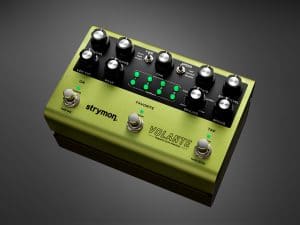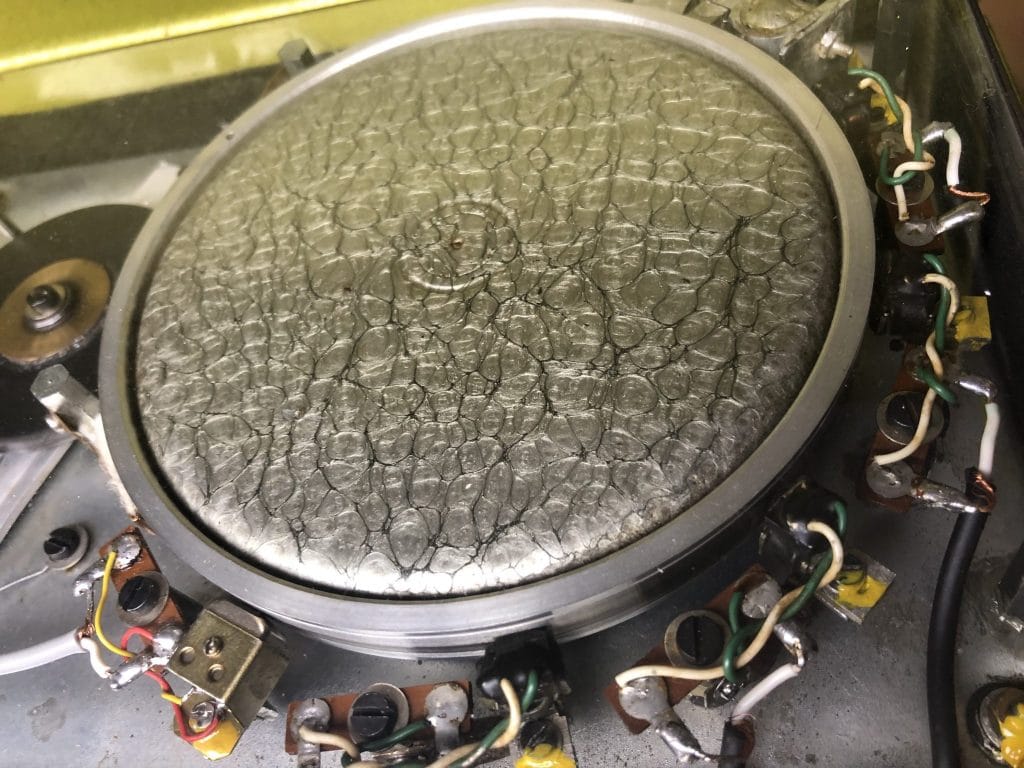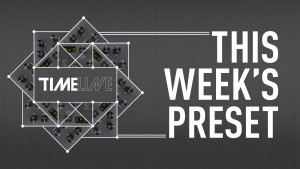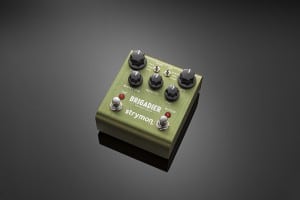
Sound on Sound Looping with Volante
Sound on Sound with Magnetic Personality One of the most engaging, fun, and potentially hypnotizing features that Volante has to offer is the way it
Free US Shipping On Orders Over $49
Easy 30-Day Returns
Financing Available Through ![]()
There have been many delay/echo technologies over the years. Before dedicated delay effects were available, studio engineers used their reel-to-reel tape machines to produce echoes. Dedicated delay effects units such as the Echoplex and the Roland Space Echo also used magnetic tape for their echoes, though with less fidelity and stability than studio tape recording machines. Also in the early days of echo effects units came the invention of the oil can delay (which used an electrostatic-mechanical system to produce its echoes).
Later, with the advent of integrated circuit chips came analog bucket brigade delay technology, allowing smaller devices that were not prone to the mechanical wear and tear that their ancestors suffered from. Continued advances in technology led to digital delays that offered extended delay times and increased fidelity. Today, modern digital signal processing (DSP) allows for extremely high fidelity plus the possibility of carefully reproducing the rich sonic characteristics of older delay technologies. So among all these delay systems, where does the drum echo fit in?
The magnetic drum echo began as an effort to develop an echo technology that would be more sonically stable than tape delays, overcoming the wow (slow pitch variations) and flutter (rapid pitch variations) inherent in the tape-based echo units available at the time. To overcome those issues, Bonfiglio Bini, owner of Binson in Milan, Italy, and engineer Scarano Gaetano created a system using a balanced rotating metal drum with a stainless steel wire (the recording medium) wrapped around the drum’s circumference.
Their most famous product, the Binson Echorec, had a record head and four playback heads arranged around the edge of the drum. The playback heads were spaced so that (with head four as a quarter note reference) head one would have a 16th note delay, head two an 8th note, and the third head a dotted 8th note delay. Different combinations of active and inactive playback heads could be selected with a twelve-position switch on the Echorec’s front panel.

Binson produced several iterations of the Echorec over the years, including the Echorec 2, the Echorec Baby, and eventually even some six-head solid state models. Binson drum echo machines can be heard on several recordings from the 60s and 70s, but are most closely associated with Pink Floyd, thanks to Syd Barrett’s and David Gilmour’s inspired use of the units.
Magnetic drum echoes are famous for their warmth and for their harmonically rich and saturated sounds. This is due not only to the characteristics of the magnetic echo system, but also in large part to the many tube stages present in the most sought-after units. There were tubes in the input buffer, the signal mixer, the record and playback amplifiers, the tone shaping circuit, and the output mixing circuit.
Learn More About Volante Buy Now – $399
Volante is a stereo multi-head delay that also offers a sound-on-sound looper and vintage spring reverb algorithm, with powerful sound-sculpting controls for limitless possibilities. Every sonic aspect of our favorite drum echoes has been meticulously reproduced within Volante. Dial in any possible sound from the full range of the best vintage drum echo units in conditions ranging from fresh-from-factory to road-worn classic.
In addition to drum echo, Volante gives you superbly crafted multi-head tape echoes, as well as a pristine studio delay with the full-bodied warmth and fidelity of reel-to-reel tape. For all three echo machine types, Volante provides four delay playback heads with individual feedback, panning, and level controls, allowing the creation of complex rhythmic patterns as well as reverb-like atmospheric textures.
To capture the nuance and complexity of classic drum and tape echo machines, every last magnetic delay system attribute was relentlessly studied and faithfully recreated. From the sought-after natural saturation and soft clipping of magnetic media when driven hard, to hands-on real-time controls for mechanics, wear, head-spacing, and low cut, Volante instantly adds tons of vintage vibe to your sound.
Check out some of our Volante videos below to learn more.
Subscribe to our newsletter to be the first to hear about new Strymon products, artist features, and behind the scenes content!

Sound on Sound with Magnetic Personality One of the most engaging, fun, and potentially hypnotizing features that Volante has to offer is the way it

You’ve heard of tape delays, bucket brigade delays, and digital delays. Maybe you’ve also heard of oil can delays…or maybe not! Oil can delay? Yup.

Click here to read an in depth white paper on our new dBucket™ technology. We’ve been getting lots of questions on just what dBucket™ is
6 Responses
Hi Strymon
Interesting post!
You wrote: “There were tubes in the input buffer, the signal mixer, the record and playback amplifiers, the tone shaping circuit, and the output mixing circuit.”
With the Volante’s analog components, are you emulating these tube stages and using DSP to create (and process) the repeats?
I can’t wait to get one, but none of the Australian shops have them as of yet!
Cheers
Daniel
@Daniel – We utilize an analog JFET and the DSP to emulate the each of these stages in Volante’s delay repeats.
Why so many types of tape delay pedals? Variety? I’ve noticed tape delays are popular but wondering if any particular type is better suited for any specific genre of music. Deco? El Capistan? Volante? Thank you.
It totally depends on personal taste and the time period of the style of music you’re trying to go for. Tape delays are what were used for many decades, so if you’re trying to recreate the sounds of the 60s/60s/70s you’re most likely going to want a tape or magnetic drum delay to get similar tones.
J’ai écrit a Strymon car j hésitait entre le el Capistan…et la volante…
Ma question était …est ce que ce dont toutes deux des pédales analog
….ils m’ont répondu par courriel.
Non…..ce sont des pédales digital..
J’ai. Acheté un dawnerprince boomar
I. Write to Strymon. Is the el capistan and volante are Both alalog pédal…signal
..they answer me on a email..
No…Both are digital…..why the music store Tell us they are analog?
I Buy a dawner prince boomar.analog.